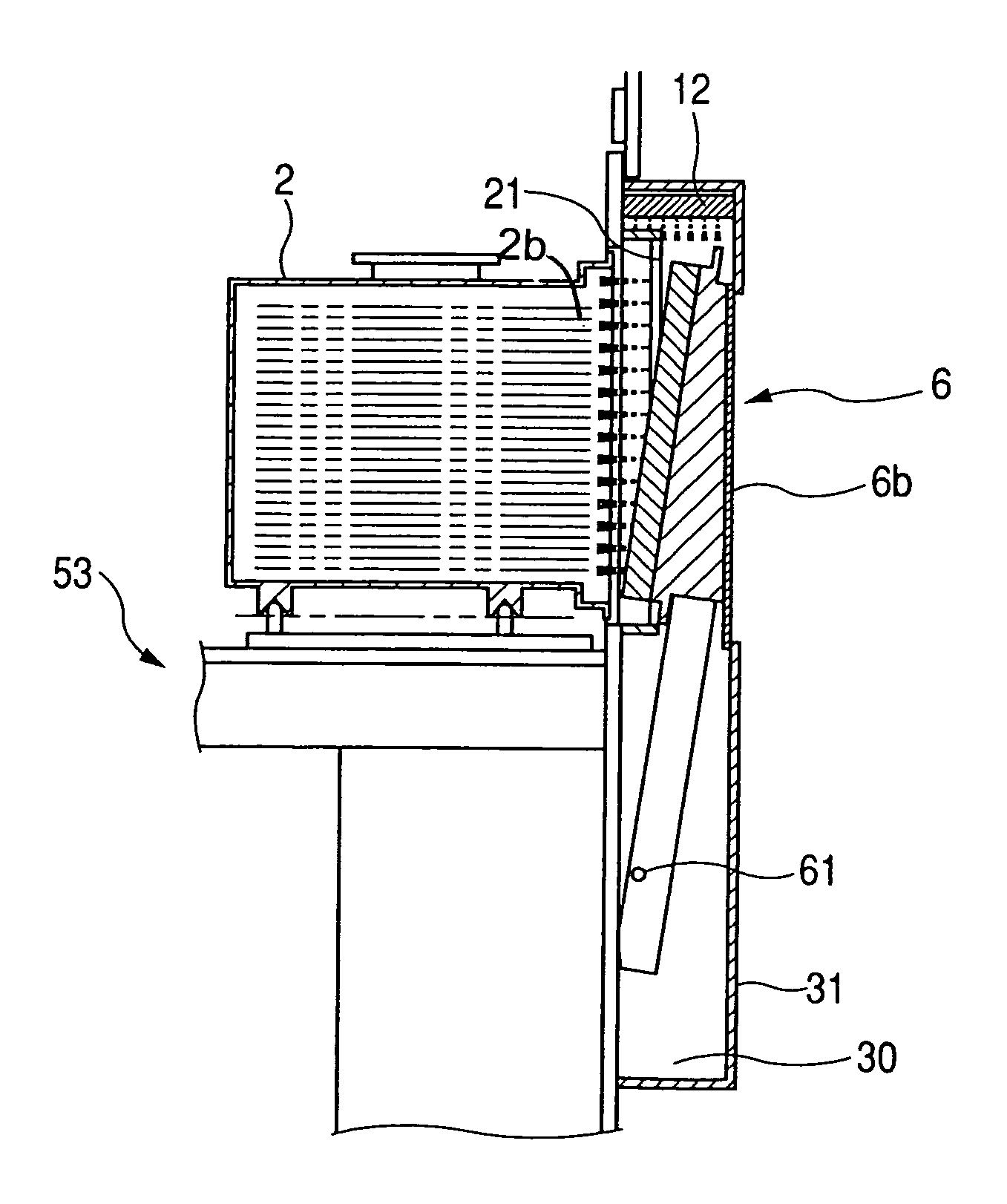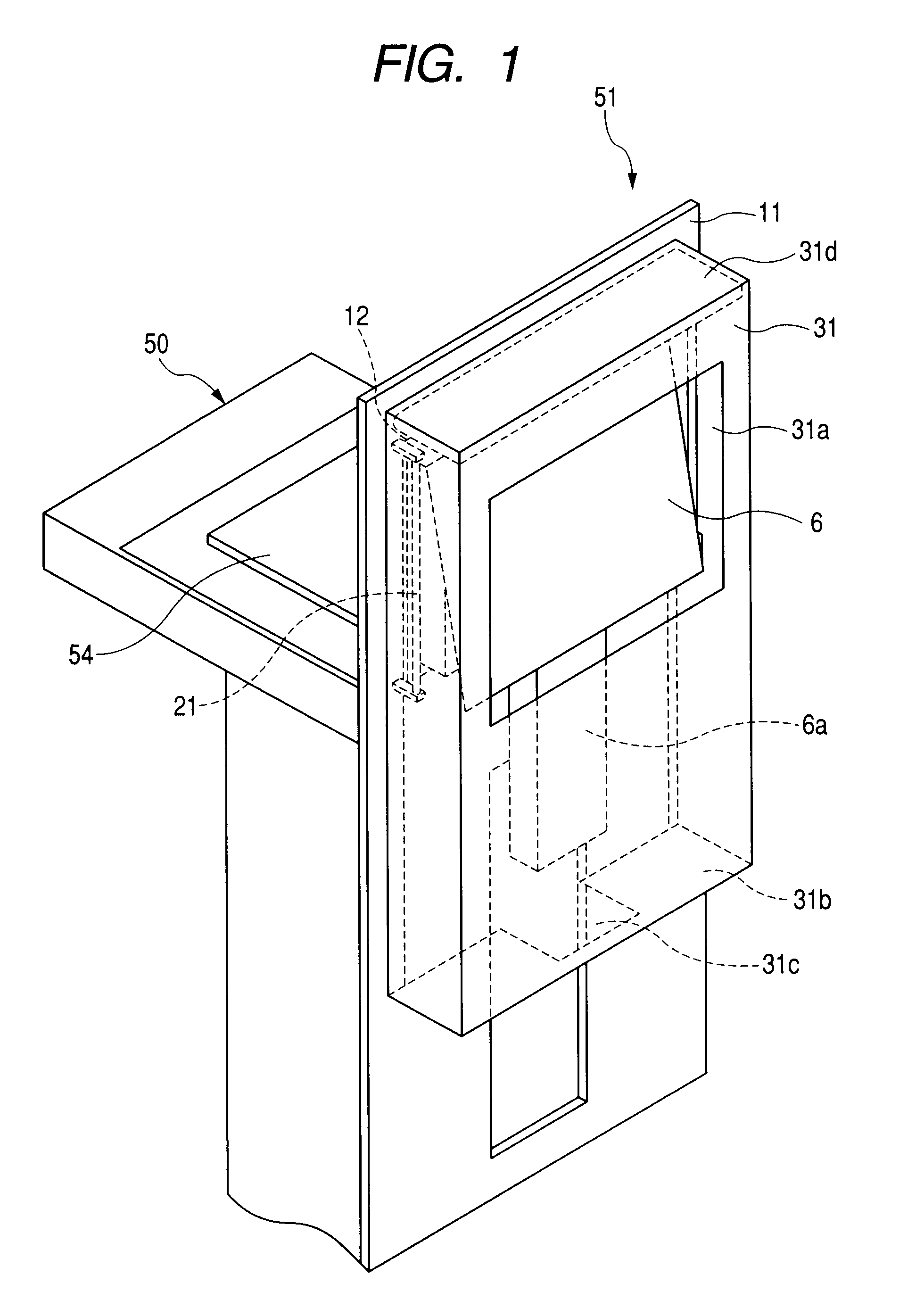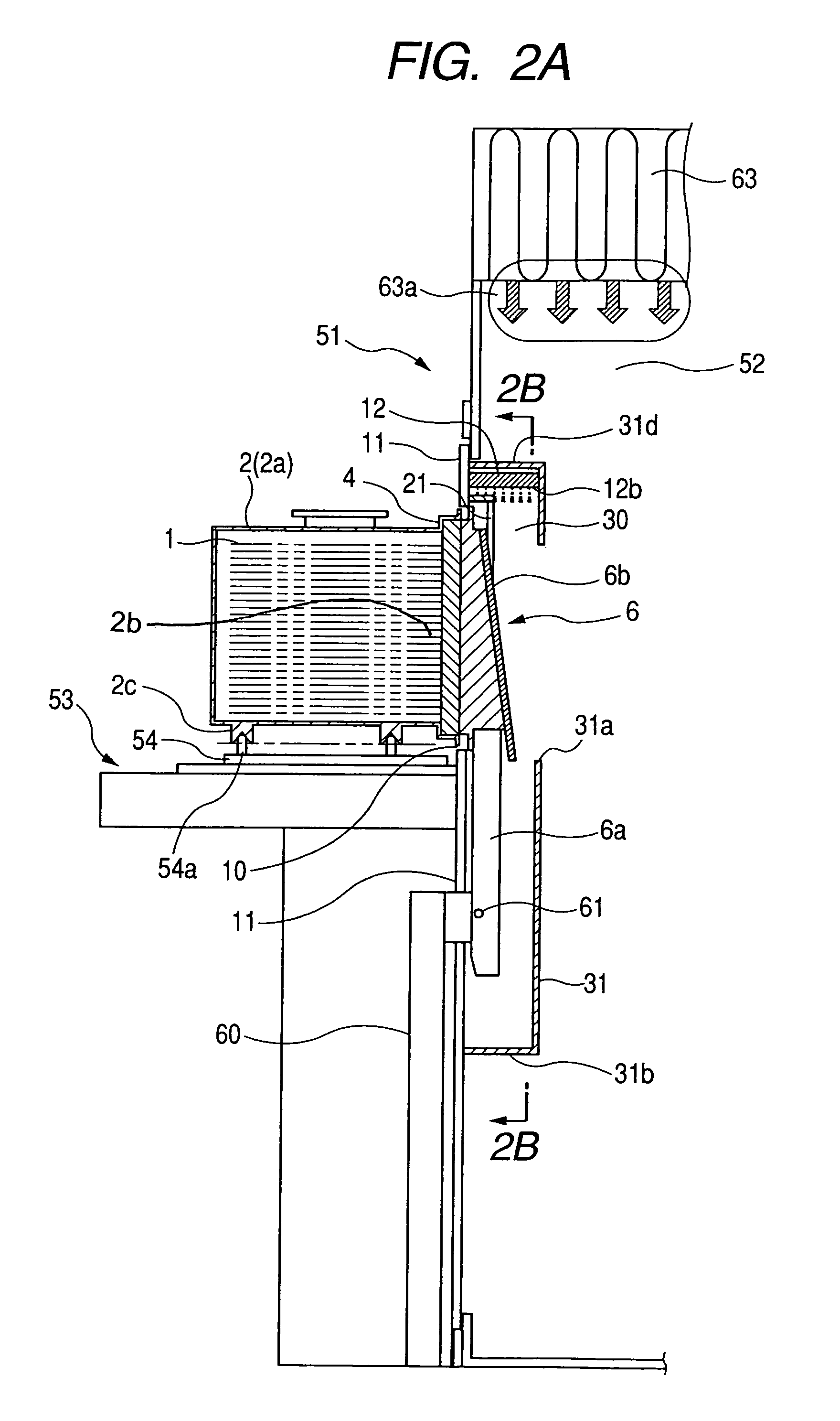Lid opening/closing system for closed container and substrate processing method using same
a closed container and substrate technology, applied in the direction of pile separation, transportation and packaging, packaging goods types, etc., can solve the problems of significant increase in the interior pressure of the pod, oxidized surface of the wafer, and inability to achieve the desired characteristics of miniaturized elements, etc., to achieve the effect of reducing the amount of oxidizing gases diffusing from the mini-environment, simple structure and reduced volum
- Summary
- Abstract
- Description
- Claims
- Application Information
AI Technical Summary
Benefits of technology
Problems solved by technology
Method used
Image
Examples
Embodiment Construction
[0031]In the following, an embodiment of the present invention will be described with reference to the accompanying drawings. FIG. 1 is a schematic perspective view seen from the mini-environment side. FIG. 1 shows the general structure of the relevant portions of a lid opening and closing apparatus (FIMS, which will be hereinafter referred to as a load port) according to an embodiment of the present invention. In FIG. 1, only the aforementioned support table, a door, a first opening portion, a part of a door opening and closing mechanism, a wall on which the first opening portion is provided and that partly defines a mini-environment and a novel enclosure that is provided according to the present invention and structures associated to them are shown. FIG. 2A is schematic cross sectional view of the load port and the pod in the state in which the pod is placed on the load port (or the support table) and the lid of the pod is in contact with the door. FIG. 2B is a cross sectional vie...
PUM
 Login to View More
Login to View More Abstract
Description
Claims
Application Information
 Login to View More
Login to View More - R&D
- Intellectual Property
- Life Sciences
- Materials
- Tech Scout
- Unparalleled Data Quality
- Higher Quality Content
- 60% Fewer Hallucinations
Browse by: Latest US Patents, China's latest patents, Technical Efficacy Thesaurus, Application Domain, Technology Topic, Popular Technical Reports.
© 2025 PatSnap. All rights reserved.Legal|Privacy policy|Modern Slavery Act Transparency Statement|Sitemap|About US| Contact US: help@patsnap.com



